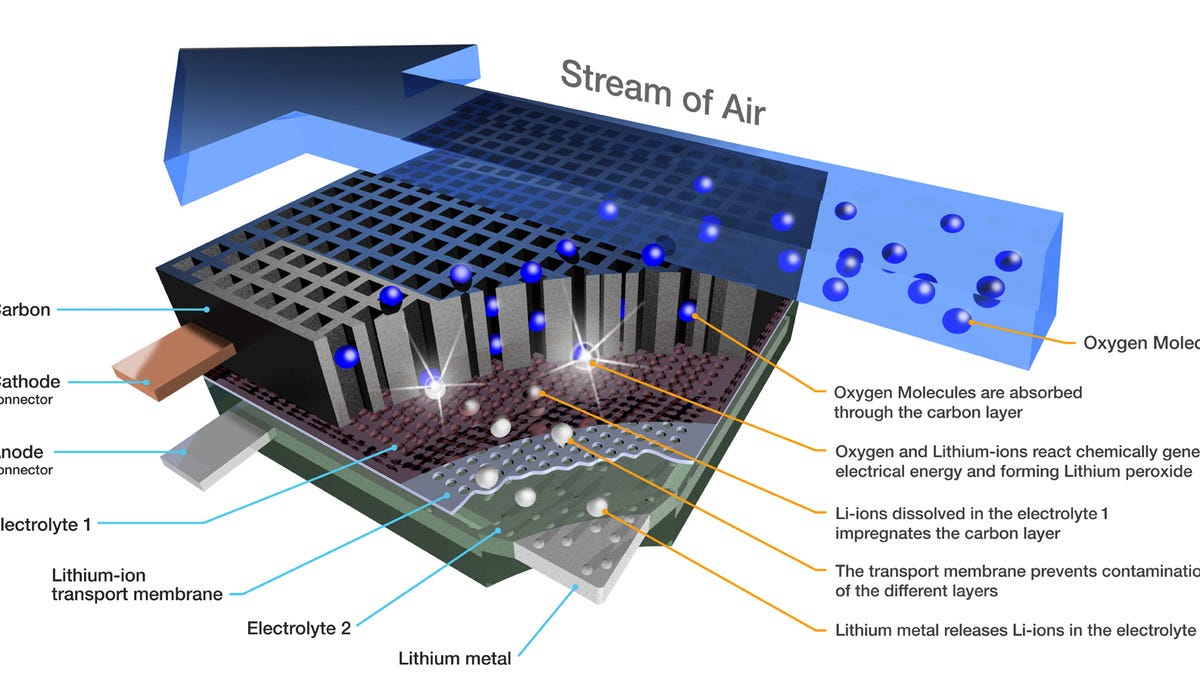IBM speeds push for 500-mile EV battery
Big Blue signs on partners for its Battery 500 Project to design an "air-breathing" lithium air battery that would create a leap in energy density.

Ten years from now, range anxiety for electric cars could be a thing of the past.
IBM today announced two partners for a project aimed at building a lithium air battery able to propel an electric car 500 miles. Scientists from Asahi Kasei and Central Glass with expertise in membranes and electrolyte chemistries will join IBM researchers on the initiative.
Called the Battery 500 Project, the goal is to design an "air-breathing" battery that will use oxygen from the air to drive a new type of battery chemical reaction and, in the process, deliver a big jump in EV range potential. The company hopes to have a working demonstration by the end of next year.
The fact that IBM Research has expanded the research team with these two companies and other unnamed ones is a sign that the ambitious effort is on the right track, said Winfried Wilcke, principal investigator at IBM Research who started the project in 2009.
Materials scientists for years have been pursuing lithium air batteries, which use oxygen from the air to react with lithium ions to discharge and charge electric energy. It still remains in the realm of research but Wilcke said that IBM has made progress understanding the basic chemistry and made important decisions on how a working battery would be engineered.
"Unlike what we originally thought, we know we have a really good electrochemical reaction. The problems now are secondary," he said. "There are still tremendous engineering challenges ahead so there's no hope of it happening this decade."
The basic target of the research is to build a battery that would give an average-size family electric car a 500-mile range. The lithium ion batteries in the Nissan Leaf and Ford Focus Electric allow for between roughly 75 and 100 miles of range. The high-end edition of Tesla Motors' Model S will have an option for up to 300 miles of range.
A lithium air battery would use a different chemical reaction inside the battery during charge and discharge from today's lithium ion batteries. Using supercomputer simulations, IBM researchers found that new active components, namely the electrolytes, need to be different, Wilcke said.
The approach IBM is pursuing now would actually use two electrolytes, with one on the anode side and another on the cathode side. Because IBM has chosen a battery design with two electrolytes, membrane technology to control the movement of lithium ions is an important part of the research.
For the most part, today's lithium ion batteries supply ample power to accelerate a car forward but the primary technical barriers are cost and energy density, or the amount of stored energy per volume. Several companies are developing enhancements to lithium ion battery components that promise to improve the performance in the years ahead.
IBM Research's approach is not an incremental improvement but a fundamentally different chemistry, which makes the venture high risk and one that requires years of consistent work. Wilcke, though, is feeling good about the progress to date and said the lithium air work could have benefits for other types of batteries.
"What I'm not certain about is what the cost will be. It's just too early and it depends on all kinds of different things," he said. "The overall trend is that I'm feeling more optimistic as time goes by, rather than less."

